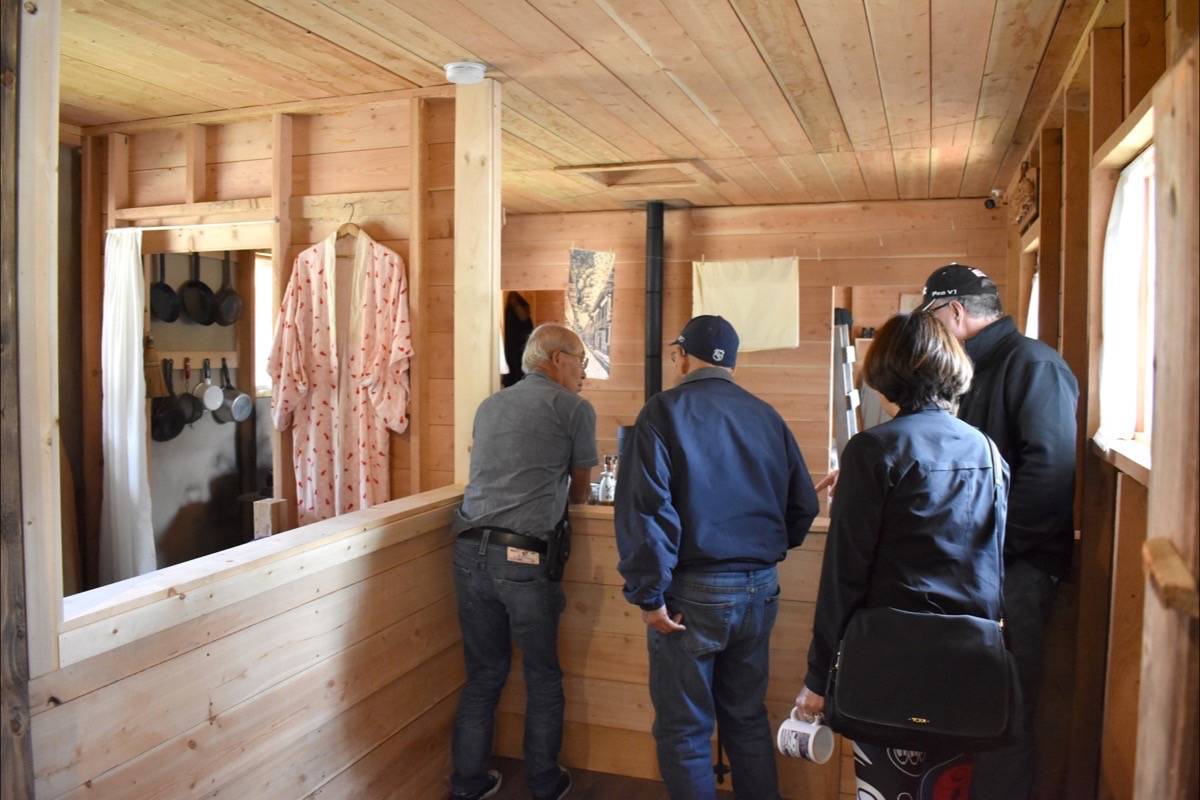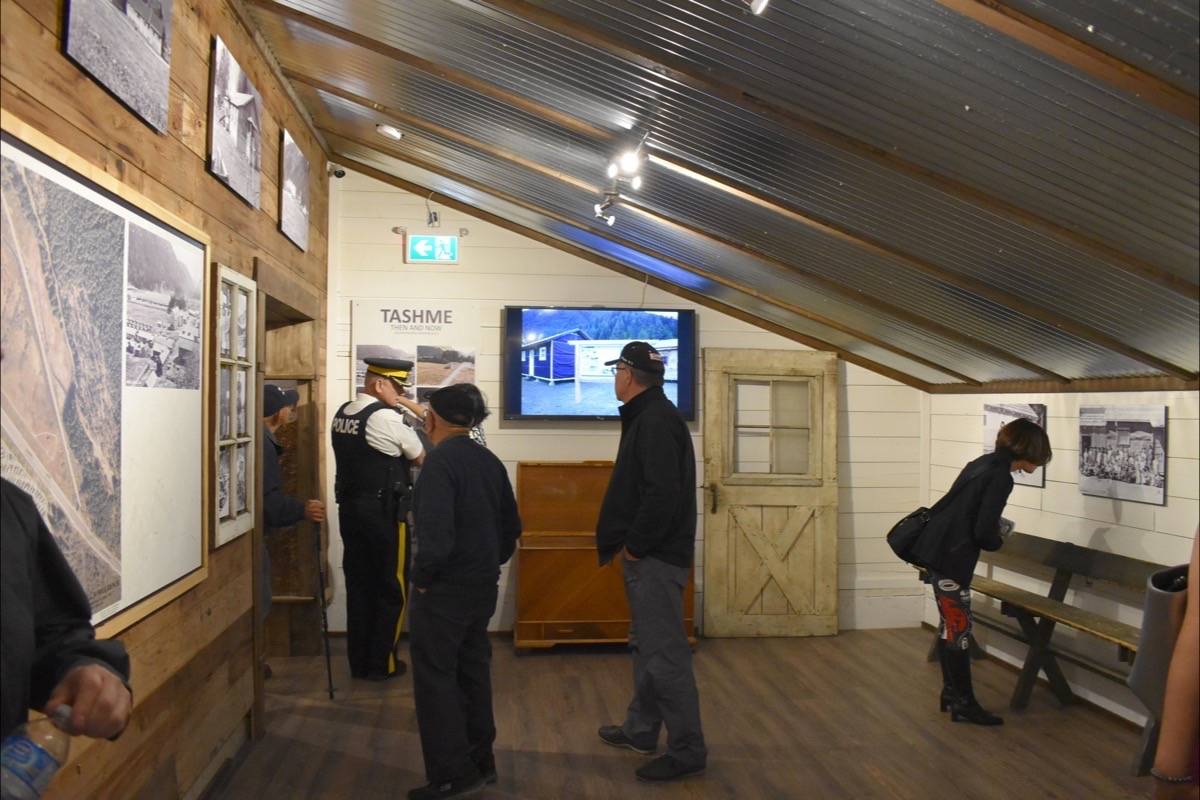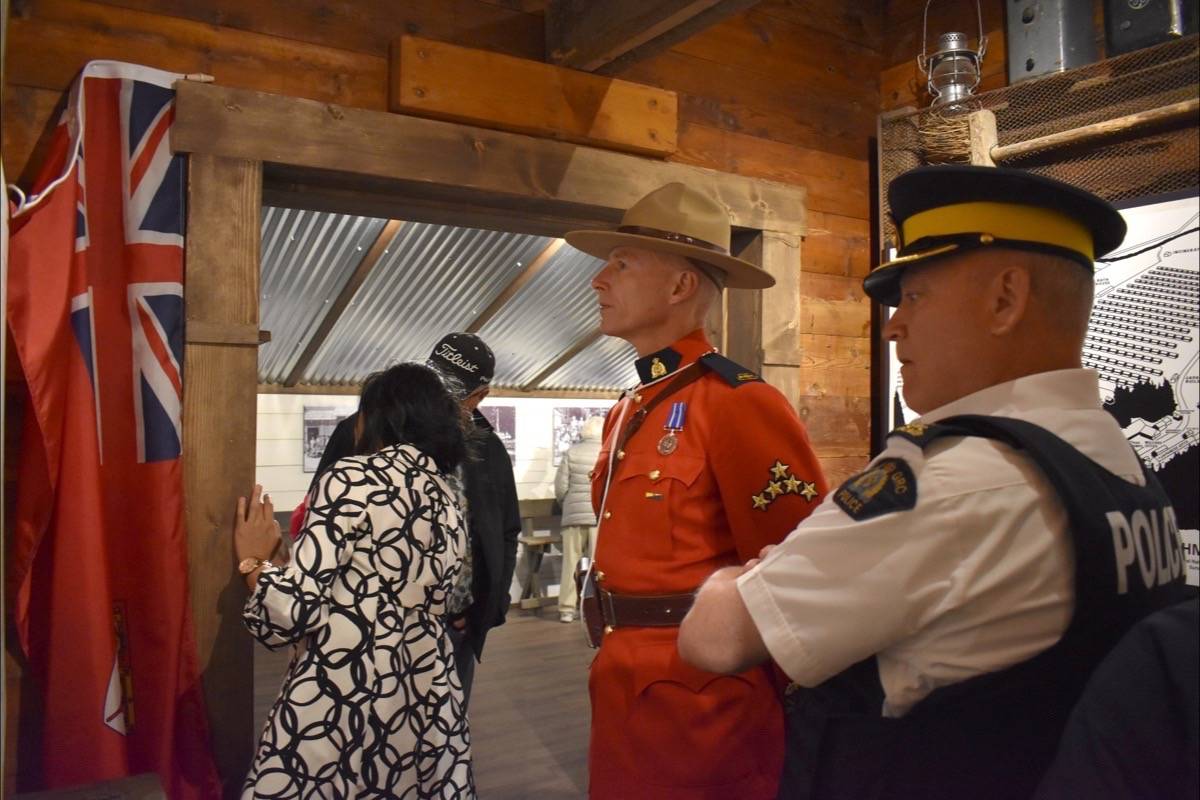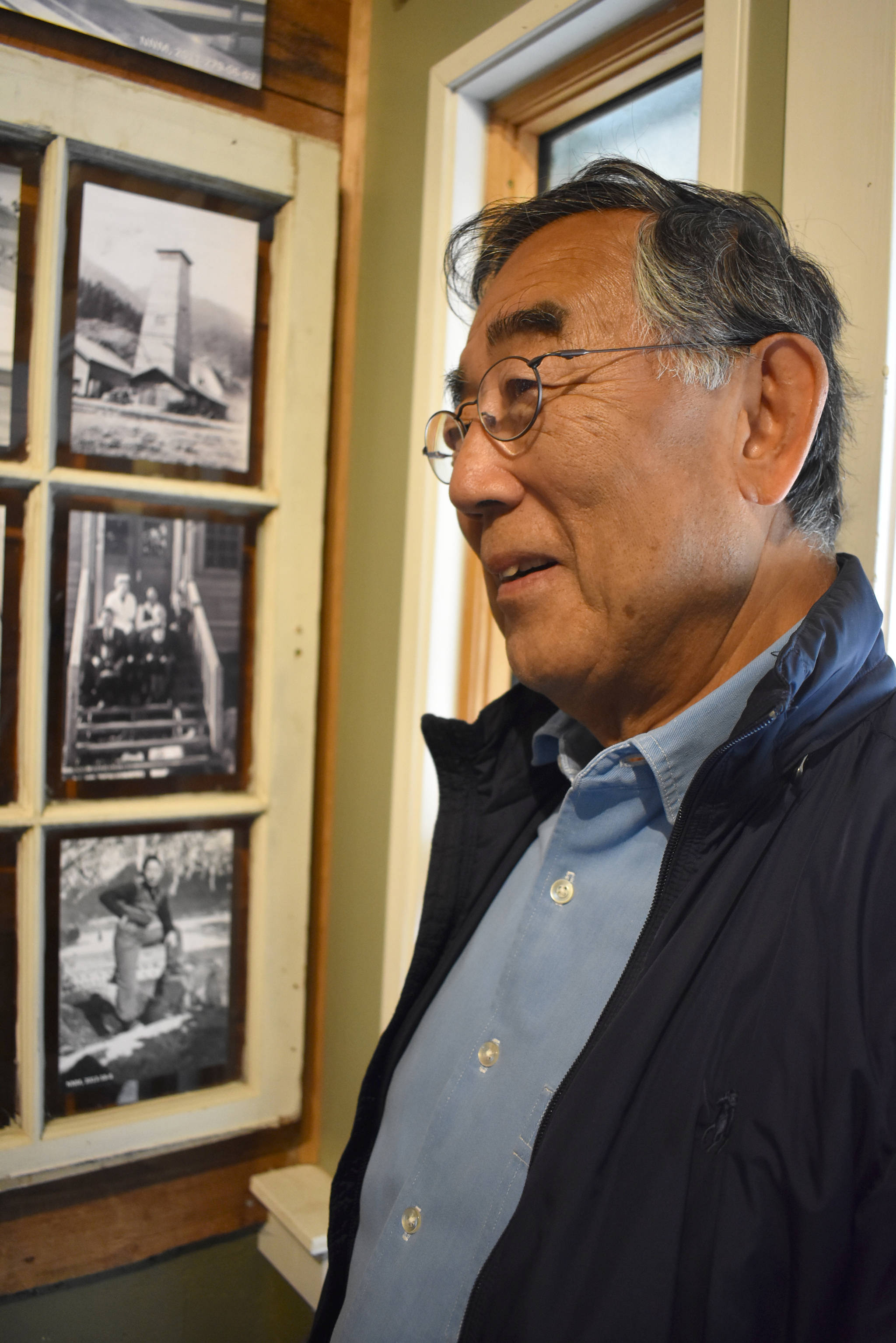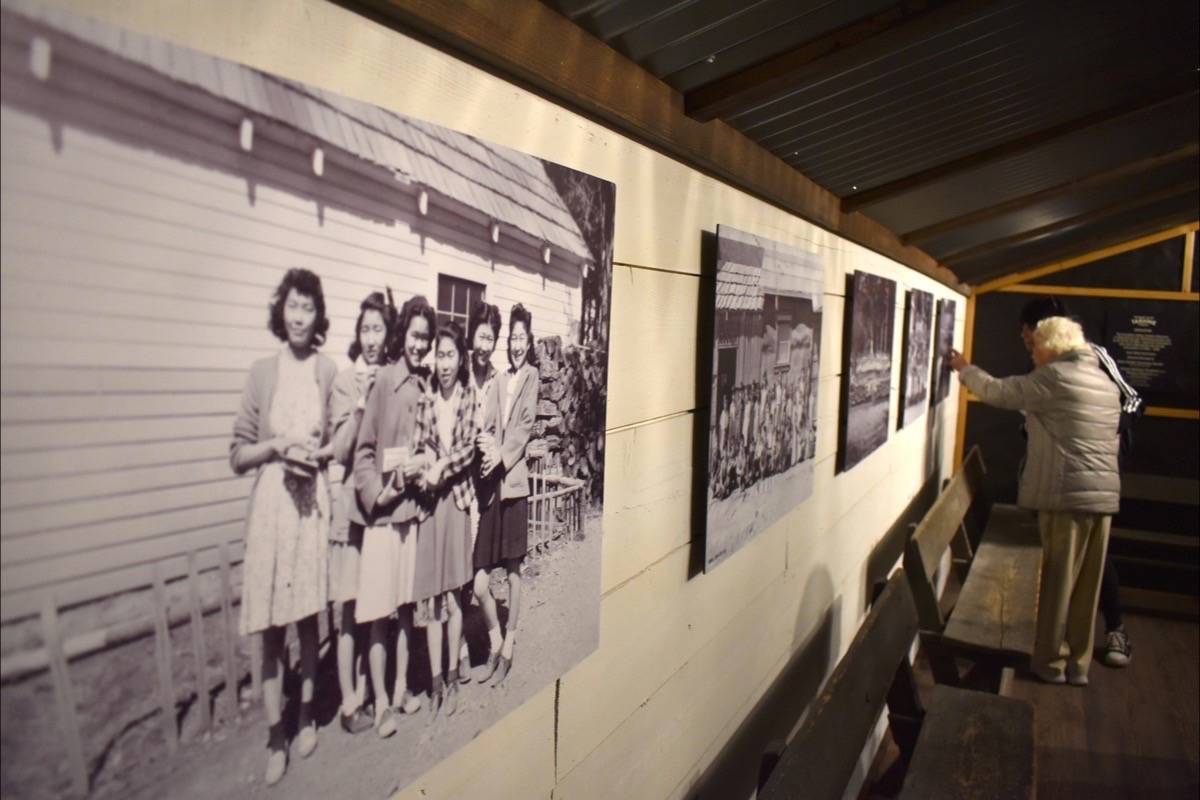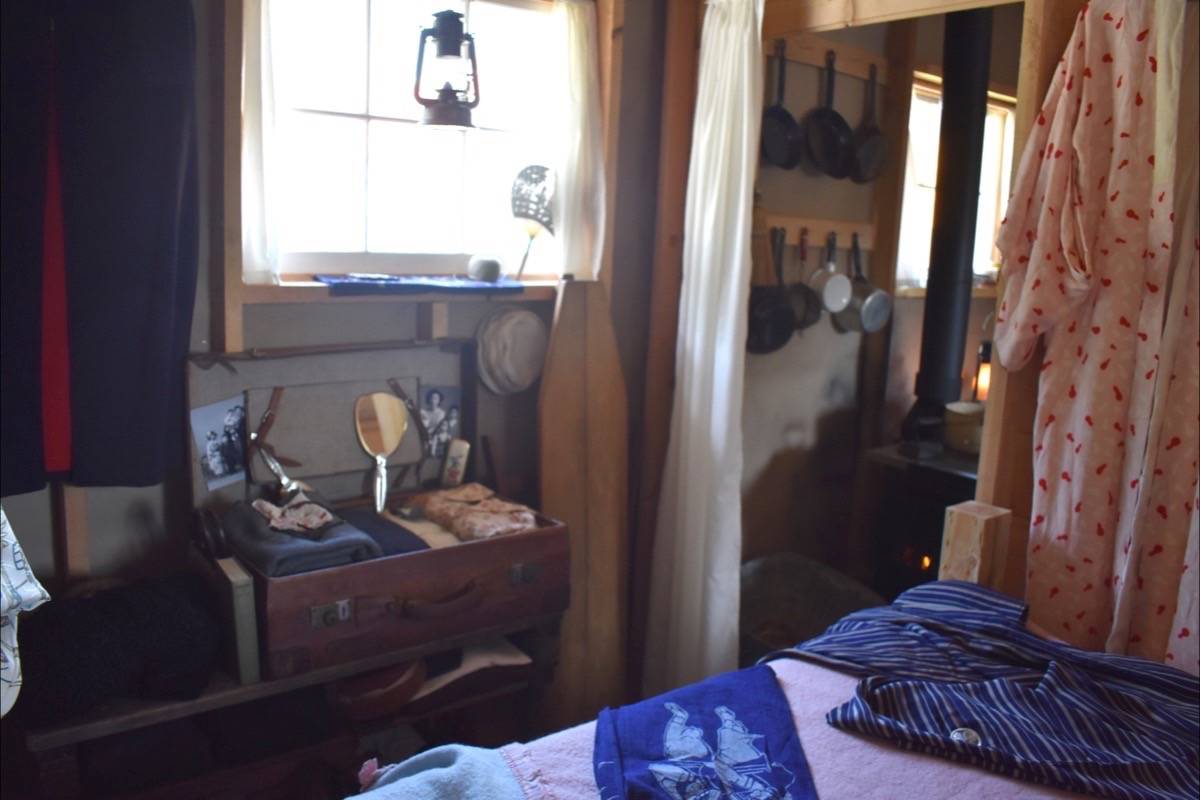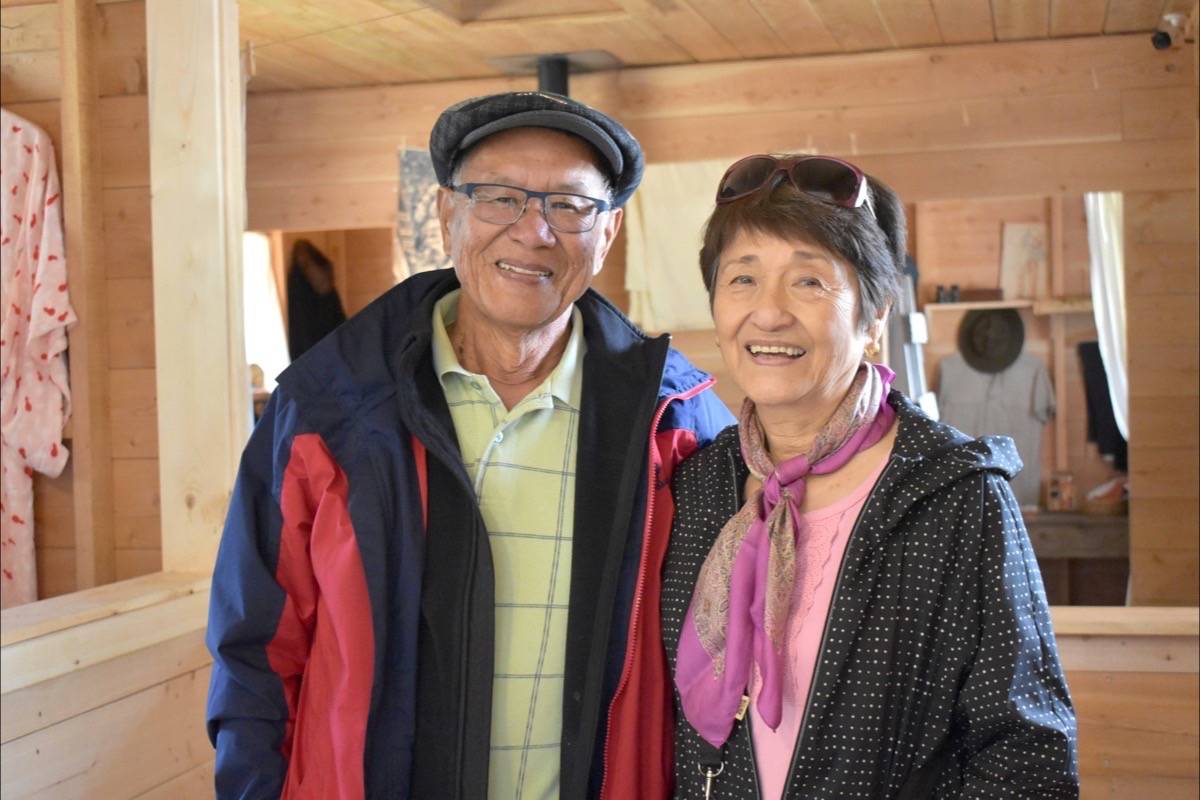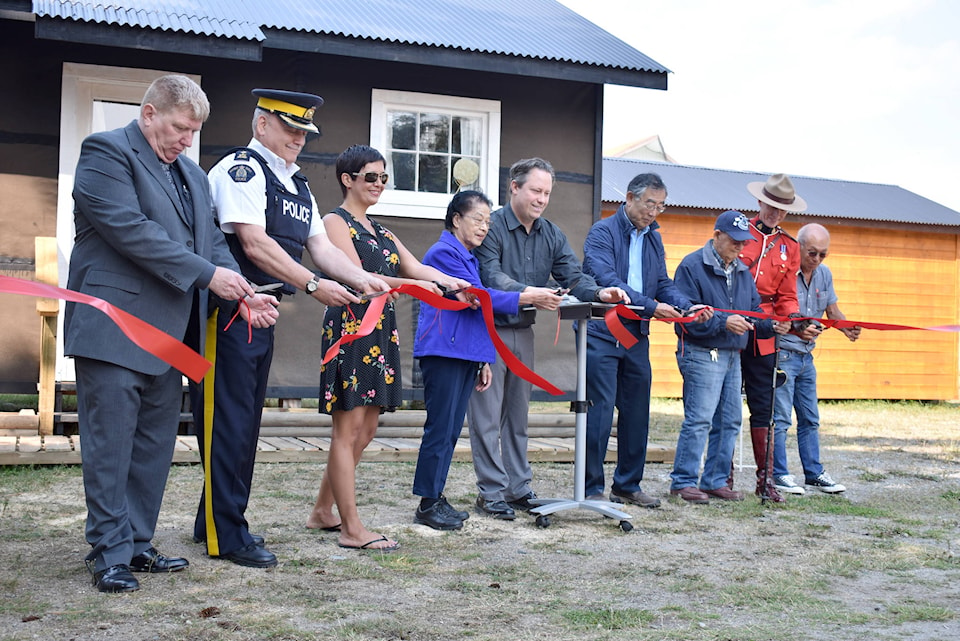They were forced to live here as children, seven decades later they returned willingly to witness their own history being memorialized at the Sunshine Valley Tashme Museum.
The first thing James Nishimura did when he entered the replica of a tar paper shack which Tashme internees lived in, now permanently displayed at the museum, was point to the black heating drum and say it used to be a red colour.
The heating drum ran red hot because it was so cold outside, a cold Nishimura wasn’t used to coming from the B.C. coast. Before the outbreak of World War II, Nishimura was a curious kid who was ‘always getting lost in Vancouver’. His father owned a dry cleaning business and Nishimura remembers the family buying a 1942 Mercury which they barely had a chance to ride in.
“All I remember is packing our suitcase in Vancouver. We didn’t have to live in Hastings Park, but we had to take a train and go to Hope and take a truck. We sat in the back of a truck, and came to Tashme,” Nishimura said.
He lived in one of Tashme’s tar paper shacks together with his parents, grandparents and three siblings. The shack was close to the communal bathhouse, so each night Nishimura would hear the clatter of wooden shoes ‘like a bunch of horses coming down’ to use the baths.
READ MORE: Sunshine Valley pays homage to karizumai
The Nishimuras were part of a forced relocation of over 22,000 ethnic Japanese residents of Canada soon after Japan’s declaration of war on the U.S., Canada and Great Britain. Canada designated all Japanese nationals, even those naturalized in Canada, as ‘enemy aliens’. All of their assets and property was confiscated and they were forced to relocate from their homes on the coast to internment camps inland.
Tashme, active from 1942 to 1946, housed at its height 2,644 people on 1,200 acres of land which now houses the community of Sunshine Valley. For decades, the Tashme history was left untold until an enterprising local with a childhood spent in the Japanese-Canadian stronghold of Steveston began to uncover it.
READ MORE: Find out what life was really like at Tashme
Ryan Ellan started the Sunshine Valley Tashme Museum project in 2015. What began as a one-room exhibit has now expanded to include three rooms, an intricately-designed tar paper shack replica and the original RCMP building adjacent to the museum’s main structure.
And he’s not done yet. There are plans to work in the original kindergarten building and possibly a garden out front.
The children of Tashme, now in their eighties, relived the experience during their Sept. 7 visit to the expanded museum.
“My time here was mostly fun, here, as a young child. I don’t feel that I suffered in any way. It was just another way of life,” said Howard Shimokura, who lived came to the camp as a four-year-old. His father was the Japanese camp doctor, second in charge after a Caucasian doctor, and his brother was born at Tashme.
As his life progressed, Shimokura said the wheels began to turn and he wondered what really had gone on during those years.
“I’m old enough to have lived through internment, but at the same time I was really too young to really understand what was going on,” he said at an event earlier in the day Sept. 7, commemorating the hardships of the Japanese-Canadian road workers. “When it was all over, we all packed our bags and moved on. But the significance of internment nagged at me for much of my life.”
The conclusions Shimokura has come to is that internment was a racist policy, and, in a time of discrimination the war was an excuse to act on this racism.
Efforts to share this history with Canadians is having some success in his eyes, he said most Canadians know about internment now compared to very few 20 years ago, but this recognition is coming quite late.
The key to this history is sharing it with young people, Shimokura said, which is why the expansion of the museum is a crucial development. As Tashme was the closest internment camp to Vancouver, the museum will be sharing this history with school groups from across the Lower Mainland as it becomes a part of the B.C. curriculum.
READ MORE: Education planned on B.C.’s racist history
“Encouraging people to come here and actually see the house, and feel what it must have been like, is a much better way of describing everyday life,” Shimokura said.
The Sunshine Valley Tashme Museum is located at 14781 Alpine Blvd. in Sunshine Valley, 15 minutes north of Hope along Highway 3.
Is there more to this story?
news@hopestandard.com
Like us on Facebook and follow us on Twitter
